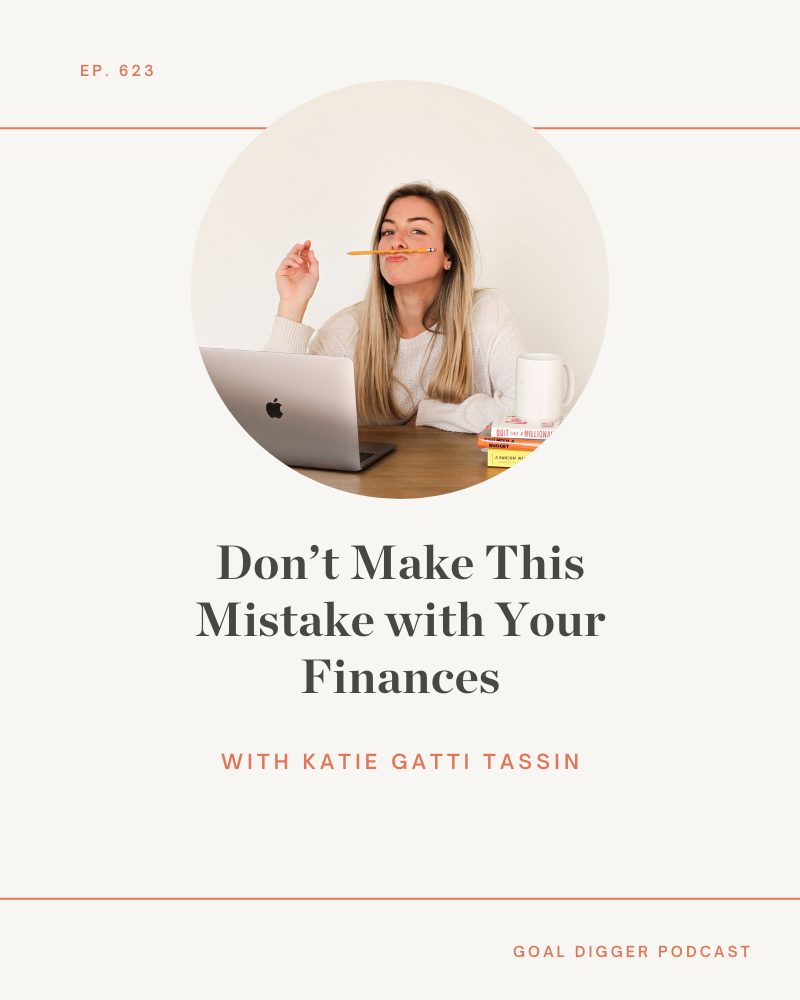
Apple Podcasts | Spotify | Stitcher
So many of you who listen to this show have either started a side hustle business, left your job to pursue your business full-time, or you’ve been a business owner for a while now. You know you can’t talk business without talking about money – profits, losses, taxes, paying your staff, investing in resources to keep things growing, the cost of doing business… It’s a lot to wrap your brain around, especially if you started your business to do what you love every day, while also *hopefully* making money while you do it.
In this episode, I’m thrilled to have money expert Katie Gatti Tassin here to dig into a full range of money topics especially relevant to side hustlers and full-time entrepreneurs. Katie is the voice and face behind Money with Katie. She’s been writing about personal finance since 2018 and now, she’s talking about personal finance on her Money with Katie podcast, too.
Making money as a contractor? We’re digging in. Taxes? We’ll talk about ‘em. Budgeting with a variable income? Yup, we’ve got that covered, too.
Katie’s financial turning point
To kick off our conversation, I asked Katie to take me back a little bit and describe when she first became interested in personal finance. She started, “I used to be super avoidant with money, and if I had it, I was spending it. To be honest, nobody comes out of the womb naturally good with money. This is not something that anyone is just born innately talented with. I think it’s like anything else in life, we have to learn it, but I think once you’re locked in a fluorescent room in a corporate setting for 40 hours a week, I think you start to value money more because you know what you had to go through to get it.”
Once Katie started getting proactive about her savings and took the time to learn the basics of personal finance, she realized how much of a difference some simple awareness and intention made, and by 25 she had grown her personal net worth to $100,000 in the span of two years. At that point, she also realized how much financial growth her friends were missing out on now that she had broken out of the spending pattern herself.
She explained, “I think that was kind of the turning point of like, I kind of wanna add my voice to this conversation. I would like to somehow contribute to this and write about it and talk about it in a way where it’s something that I would want to read. Like, how would I describe this to my other friends that don’t care right now? How do I make them care and how do I teach them what they need to know? So I think that was kind of the impetus for Money with Katie.”
How to add a new income stream
I know many of my listeners are entrepreneurs and side hustlers, so I asked Katie what financial considerations someone should think about if they’re wanting to add a stream of income while maintaining a full-time job. She provided a bunch of great tips, which you can find in the full podcast episode, but here are a couple key takeaways from our conversation:
“First of all, I will say if you are at the point where you’re adding new streams of income, you are already in a very impressive upper echelon of earners and hard workers, because fewer than 10% of Americans have more than one stream of income. As far as financial considerations go, I think there are a few ways to think about this. The first is through the lens of taxes. If your new source of income is technically 1099, self-employment income, it’s likely that you have not paid taxes on it yet, right? Like you’re getting the checks directly from other people or from a payment processor, and the IRS always finds a way to get its hands on your bag, right? So you want to be aware of how much you’re bringing in, and that you’re setting aside roughly 25% of it for tax season.”
“The second thing that I would think about is through the lens of budgeting. So often when we start to make more money, we don’t tend to buckle down. We tend to ramp up. So if you’re not paying attention, you’ll probably see more zeros in the checking account and then start spending accordingly, which is totally natural. But it’s just important to revisit your numbers once you do have a recurring source of extra income and make sure that you are bumping up, saving and investing too. And that it’s not like the leaky bucket problem where yes, you’re putting more money into it, but it’s just going back out the door.”
Be prepared for variable income
For those reading along, I want you to go back and listen to her episode of Money with Katie from June 8th about building a six-figure side hustle, monetizing content, and budgeting with variable income, it’s pure gold and I learned so much from her that episode. Katie’s advice for navigating the variability that inevitably comes with entrepreneurship was so helpful, I asked her to share it here for my listeners. She said, “I think my best advice, and I’m saying that with the caveat of like, I’m not a financial planner. I’m just an obsessor. But my best advice for variable income has three main components.
“The first is to establish the cash cushion/slush fund right out the gate. So this should be six to 12 months’ worth of your spending needs in cash that you can access easily. So not only does this mean that you won’t have to dip into your traditional savings during a lean month, but it also means you don’t have to make business decisions out of a place of desperation.
“The second thing would be to set up your baseline expenses. So, I would sit down and make a list of all the expenses that have to be paid every month. Your very baseline things, so think rent or mortgage, childcare, healthcare, groceries, car payments, insurance, you name it. Anything that you can’t just turn off if things go sideways. We’re talking about the stuff that keeps the metaphoric lights on, both for you personally and for your business.
“And then the third thing I think would be setting up what I’ll call the thrive expenses. So now that the mortgage is paid, the kids are in daycare, what do you want your lifestyle to look like? How are you going to spend in a way that actually brings you joy, but that could be tapered back if you really needed to? So this is the thrive on top of the survive, and it helps to show you how much wiggle room you would have in a typical monthly budget. I think it’s really fun to do what you love for a living, but it is less fun if you are like, ‘I don’t know how I’m gonna pay rent.’ It’s not fun enough to make up for financial insecurity. So I think getting really clear on those things ahead of can almost help you stay grounded in reality.”
More from Katie
Katie’s financial advice has taught me so much about my own business and I’m so happy I got the opportunity to share her brilliance with you all, make sure to listen to the full episode for the rest of her great tips. For more from Katie Gatti Tassin you can listen to her podcast, Money with Katie on all platforms. You can also visit her website moneywithkatie.com and find her on Instagram and Twitter @moneywithkatie.
Thank you to our Goal Digger Sponsors
Learn more about Nikon’s new Z30, the camera creators have been waiting for | Learn how your business can grow better with HubSpot




